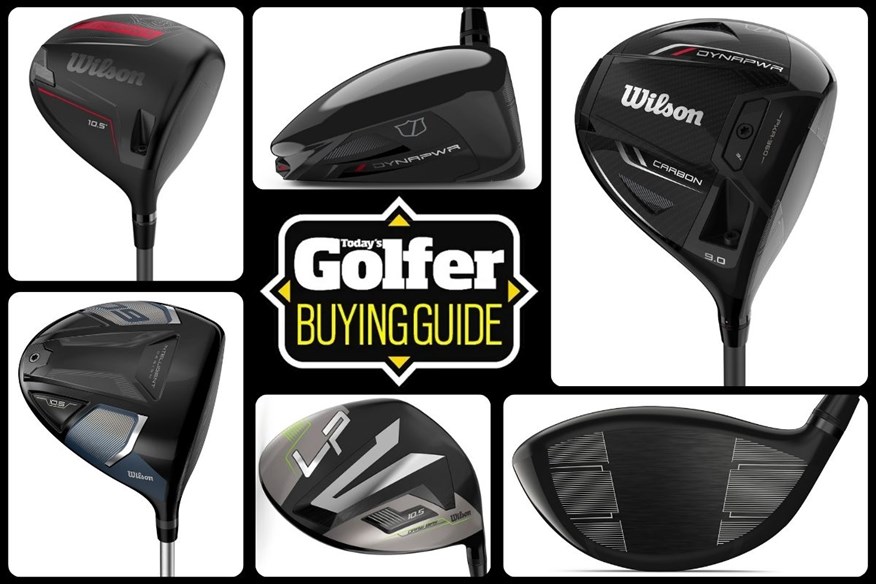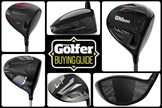Best Wilson Golf Drivers 2025: Three models to suit every golfer
Last updated:
Click here to find out how we conducted our 2025 golf drivers test
Wilson have reduced the number of drivers they offer for 2025. Their entire range comprises solely of the Dynapower collection. How do the three heads compare, and which one is best for your game?
Jump to:
In previous years, Wilson may have been a brand you overlooked when searching for the best golf driver, however, that shouldn’t be the case in 2025. This is the first year Wilson have launched three driver heads in the same family. The range of Dynapower driver heads is incredibly versatile, and there is an option for every golfer. Allow me to help you find the best Wilson driver for your game.
Although Wilson have brought three drivers to market in 2025, they still have a wide range of older models to choose from, including the original Dynapower driver family, LaunchPad, and D9. Wilson are capable of catering to every golfer with their collection of drivers from recent years, so whether you’re in the market for the longest driver or a draw-biased driver, Wilson has you covered.
Wilson drivers performed incredibly well in our 2025 driver test, with the Dynapower Carbon claiming victory in the core models category. The Dynapower LS also impressed, as it was crowned the surprise performer of the entire test because of its outstanding forgiveness. We certainly didn’t expect the LS model to be challenging the most forgiving drivers as well as the best low-spin drivers.
Best Wilson Drivers 2025: At a Glance
Best overall: Wilson Dynapower Carbon | View Offer – US | View Offer – UK
Best low-spin: Wilson Dynapower LS | View Offer – US | View Offer – UK
Best titanium: Wilson Dynapower Titanium | View Offer – US | View Offer – UK
Best value: Wilson D9 | View Offer – US | View Offer – UK
Golfers don’t often place Wilson in the same category as Callaway, Titleist, Ping, TaylorMade, etc., when it comes to drivers, but I think it’s about time they did enter more golfers’ calculations. A couple of things you’re guaranteed from a Wilson driver are premium quality, competitive pricing, and excellent performance.
Before investing in a new Wilson driver, there are certain factors to weigh up – you can read more about what to consider in our extensive buying guide below. However, a couple of factors to bear in mind as you’re looking at the best Wilson drivers are whether distance or forgiveness is more important. Also, with Wilson, you can quite easily disregard your ability because whether you’re a mid-handicap golfer or a beginner or high-handicapper, no Wilson driver head is out of the question.
If you’re here looking for one of the best drivers for women or a suitable option for golfers with slow swing speeds, you’re in the perfect place! Wilson offers an extensive range of driver shafts and even lighter heads for golfers with slower swing speeds.
Enough talking for now. Let’s take a look at the best Wilson drivers and choose your character…
Best Wilson Drivers 2025
An amazingly well-rounded driver
Best overall Wilson driver
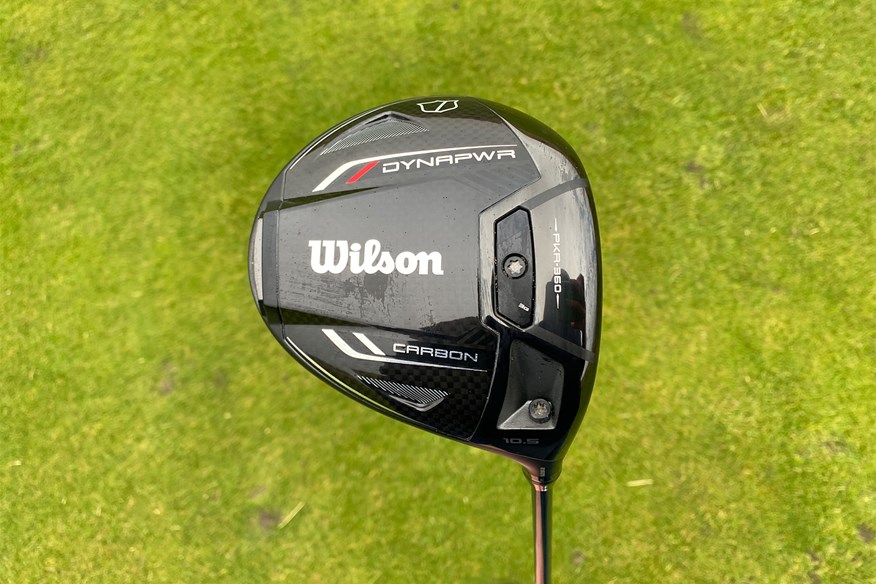

The silver medal winner in our overall driver of the year category, and we’re just as pleasantly surprised as you are! We’ll tell you who isn’t surprised, though, and that’s Wilson’s R&D team. Having been on the rise across several club categories these last few years, the Dynapwr Carbon finished 1st and 2nd for carry within the Core models category in its front and rear settings, respectively.
Wilson's commitment to their woods over the last few generations has been really impressive, and the new models epitomize this. With outstanding dispersion and carry while also being easy to get in the air, the Carbon represents everything the Core model category winner needs.
What our tester says:
The Carbon, like the LS, frames really nicely behind the ball, but the performance is just so impressive compared to what you may expect from a Wilson product. They’re challenging the biggest brands this year.
Read our full Wilson Dynapwr Carbon Driver review.
Key drivers test data:
Ball Speed 165.3 mph | Carry 284.8 yards | Spin (Total) 2,682 rpm | Launch Angle 11.7º | Height 37.4 yards | Descent Angle 42.3º | L-R Dispersion 16.1 yards
Pros
- Winner of the Best Core Driver of 2025
- Clean sweep of Best Core Distance and Best Core Accuracy
- Movable Weight System
- Best Headcover of 2025
Cons
- Graphics and looks have produced mixed reactions
| RRP | $549.99 / £480.00 |
| Lofts | 8° / 9° / 10.5° / 10.5° Lite |
| Head Size | 460cc |
| Lie | 57.0° |
| Standard Shaft Length | 45.75” |
| Stock Shaft Options | Fujikura Ventus TR Blue | (10.5° Lite) UST Helium NCT 4 Lightweight |
| Stock Grip | Lamkin Crossline 360 Black |
- Tour-inspired
- Sound engineered
- PKR-360
- Open Hosel Construction
- Full Adjustability
A super-forgiving low-spin model
Best low-spin Wilson driver
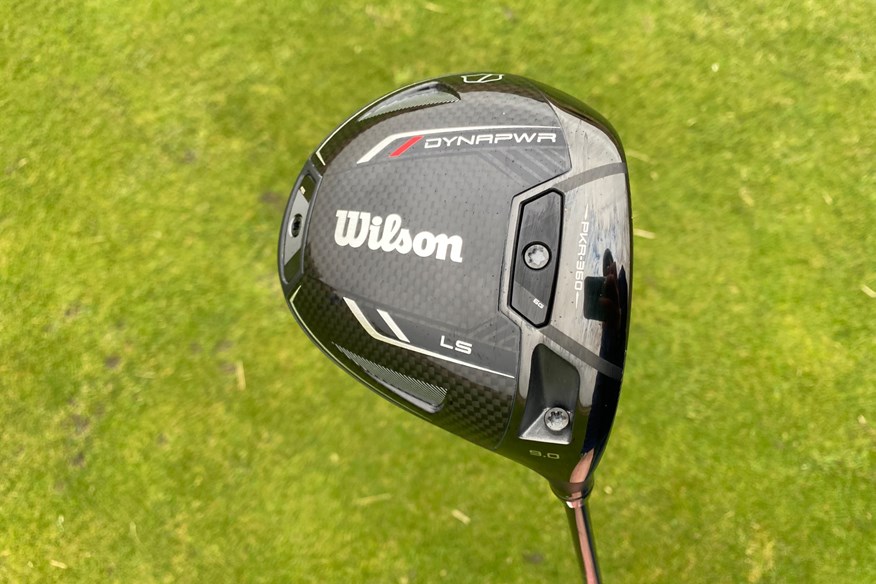

Wilson’s entire Dynapwr range is very intriguing. The Carbon model has done exceptionally well, with its 2nd place overall, but the LS is close to the top of its own category. It had the two tightest dispersion patterns of the whole test while also creating good launch with lower spin than the average for the category. It’s our Surprise Performer for 2025 and one that you shouldn’t ignore in the fitting space.
What our tester says:
This driver looks exceptional! I really wasn’t expecting this from Wilson, but I’ve been pleasantly surprised by what the company have to offer this year. All the Dynapwr range looks inviting, and the LS deserves its highlight as the surprise model!
Read our full Wilson Dynapwr LS Driver review.
Key drivers test data:
Ball Speed 162.2 mph | Carry 286.4 yards | Spin (Total) 2,228 rpm | Launch Angle 12.8º | Height 35.1 yards | Descent Angle 39.6º | L-R Dispersion 13.6 yards
Pros
- Surprise Driver Performer Award of 2025
- 1st and 2nd Tightest Dispersion
- Our test pro loved the smaller size
Cons
- Like the carbon, the looks and graphics may not be for everyone
| RRP | $549.99 / £480.00 |
| Lofts | 8° / 9° / 10.5° |
| Head Size | 445cc 8° & 9° | 450cc 10.5° |
| Lie | 57.0° |
| Stock Shaft Length | 45.75” |
| Stock Shaft Options | True Temper Denali Black 60 |
| Stock Grip | Lamkin Crossline 360 Black |
- Optimized aerodynamic shaping
- Sound engineered
- PKR-360
- Open Hosel Construction
- Maximum Adjustability
A solid forgiving driver
Best workable forgiving Wilson driver
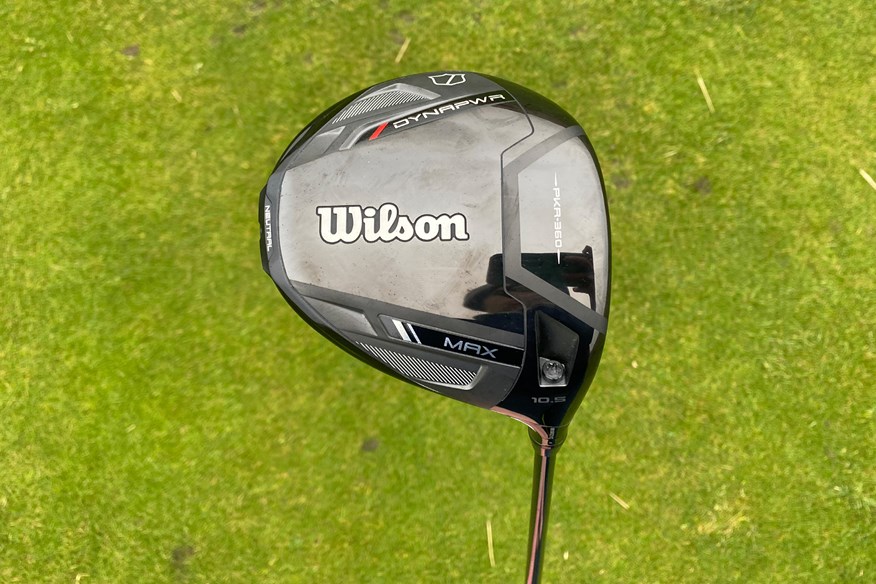

The Dynapwr Max carries on with the family legacy in our testing by offering incredibly tight Left-Right dispersion. The second tightest in the Max Forgiveness category. Where it was maybe the black sheep for Wilson’s 2025 selection is that it came bottom of testing for carry distance, however, we’d always say that your mileage may vary depending on what you need from your ball flight.
What our tester says:
While it's a little disappointing the Max didn’t do as well as the other two Dynapwr models, I still think there’s something here for the right golfer. It’s very easy to hit, and I loved seeing how tight every shot has been in the testing range.
Read our full Wilson Dynapwr Max Driver review.
Key drivers test data:
Ball Speed 161.5 mph | Carry 273.2 yards | Spin (Total) 2,887 rpm | Launch Angle 12.6º | Height 38.8 yards | Descent Angle 44.0º | L-R Dispersion 18.7 yards
Pros
- Good value
- Forgiving and easy to hit
- Sits well at address
Cons
- Not as long as the Carbon and LS models
- Not as much adjustability as the other two heads
- Slower ball speeds than the Carbon and LS drivers
| RRP | $549.99 / £480.00 |
| Lofts | 9° / 10.5° / 12° / 12° Lite |
| Head Size | 445cc 8° & 9° | 450cc 10.5° |
| Lie | 57.0° |
| Stock Shaft Length | 45.75” |
| Stock Shaft Options | UST LIN-Q M40 Red 5/6 | UST Helium NCT 4 Lightweight |
| Stock Grip | Lamkin Crossline 360 Black |
- Stability-driven shaping
- Sound engineered
- PKR-360
- All-titanium design
- Full Adjustability
Best Wilson Drivers 2025: Test Data
| Model | Loft (°) | Clubhead Speed (mph) | Ball Speed (mph) (+/- SD) | Carry Distance (yds) (+/- SD) | Spin Total (rpm) (+/- SD) | Launch Angle (°) | Height (yds) | Descent Angle (°) | L-R Dispersion (yds) |
| DynaPower LS (Forward) | 10.5 | 114.6 | 162.2 (1.9) | 286.4 (4.7) | 2,228 (194) | 12.8 | 35.1 | 39.6 | 13.6 |
| DynaPower LS (Rear) | 10.5 | 114.6 | 161.6 (1.3) | 282.1 (2.0) | 2,408 (229) | 12.9 | 36.8 | 41.4 | 15.9 |
| DynaPower Carbon (Forward) | 10.5 | 117 | 165.2 (2.6) | 289.9 (8.3) | 2,442 (478) | 12.8 | 38.1 | 42.0 | 44.3 |
| DynaPower Carbon (Rear) | 10.5 | 115.6 | 165.3 (1.3) | 284.8 (5.8) | 2,682 (187) | 11.7 | 37.4 | 42.3 | 16.1 |
| DynaPower Max | 10.5 | 113.9 | 161.5 (1.1) | 273.2 (5.9) | 2,887 (281) | 12.6 | 38.8 | 44.0 | 18.7 |
Best Older Wilson Drivers
A forgiving and easy to hit driver
Best titanium Wilson driver
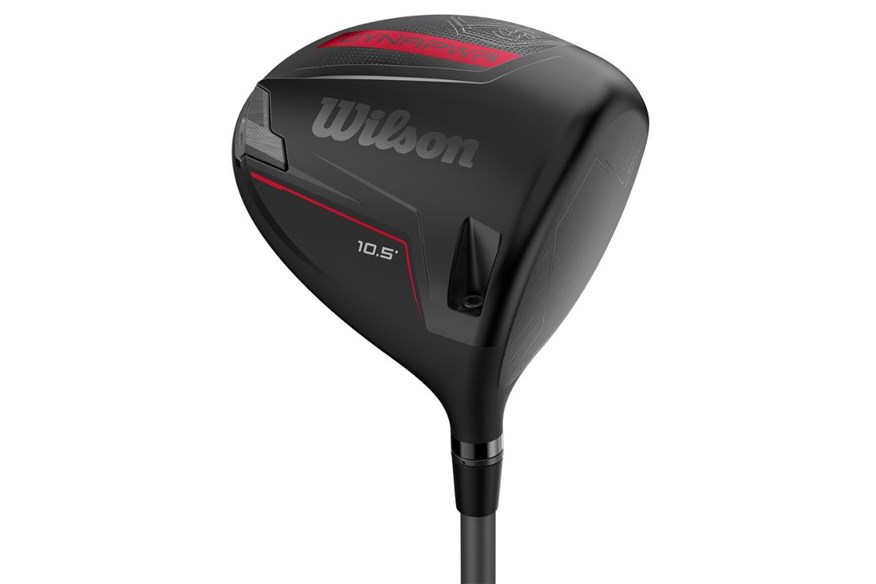

Rrp: $429.99
We put the Wilson Dynapower Titanium driver through its paces against all of its 2023 rivals as part of our annual head-to-head test. We found the 16g of rear weighting made the Titanium a fraction draw-biased as well as forgiving.
An award-winning, great value driver
Best value Wilson driver
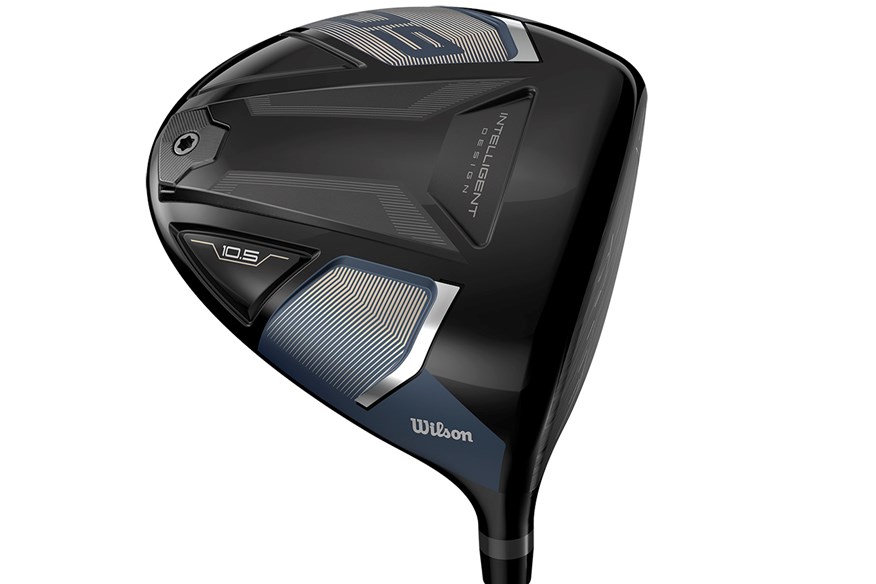

It means center strikes are 2.5mph faster with the Wilson D9 driver than its predecessor, the D7, and an average of 1.6mph faster across nine points on the face.
Tour players, Gary Woodland and Brendan Steele, were involved in the design and testing process. The standard D9 comes with a 10g sole weight, but golfers who want a super-light setup can switch to a 3g option. Our test found just a 3.4mph drop-off in ball speed on mis-hits, making it the third-best driver at preserving ball speeds when not struck from the middle in our 2021 best drivers test.
Read our full Wilson Staff D9 driver review.
A strong driver to help stop a slice
Best draw-bias Wilson driver
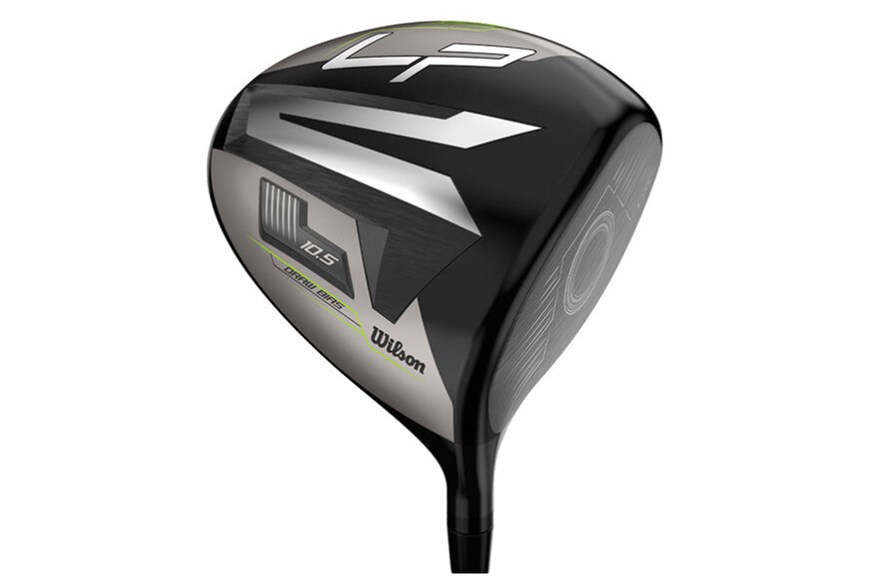

When tested against golfers’ own drivers, Wilson saw the LaunchPad hit shots with a spin axis 8° more left on average, which led to shots finishing 13.5 yards further left than with their own driver.
The Wilson LaunchPad wasn’t the longest driver in our test, but still produced carry distances of over 200 yards at a slow swing speed. It was also one of the highest-launching draw drivers we tested, which is good for those who struggle to get drivers airborne.
The Wilson LaunchPad driver’s aesthetics may look slightly dated against some other draw-biased drivers, but that big, friendly pan-shaped head creates the model’s forgiving traits. And if it keeps you out of the rough and trees, you’ll learn to love it pretty quickly.
Read our full Wilson Launch Pad driver review.
Best Wilson Drivers 2025: Buying Guide
Driver design innovations in 2025
Last year saw some of the biggest driver innovations for a decade as brands focused strongly on forgiveness. Increased MOI (Moment of Inertia) delivered more stable clubheads that boosted distance and accuracy on off-centre strikes.
If 2024 was the year of MOI drivers, what is the theme in 2025? Based on the key technologies being lauded, 2025 might well be the year of lower spin.
Wilson have optimized the launch and spin conditions of their new driver designs as they seek to rival the big boys.
The importance of centre of gravity (CG)
One of, if not the most important aspects of modern driver design is CG (Centre of Gravity) placement. CG will help dictate the characteristics of the driver by influencing how the head wants to present itself during impact and how it reacts to different strikes.
CG is a way to describe the point that the driver’s weight is balanced in all directions and is measured over three planes: the X-, Y-, and Z-axis.
Shot Shape
X-axis is about heel-to-toe location and can influence how much draw or fade bias a driver can have. If you put the Centre of Gravity closer to the heel, the club will be easier to square up and can help with fighting a cut shot or open-face strikes. The driver will be harder to close if the weight is in the toe.
Spin
The Y-axis is high-to-low (or crown to-sole) and changes the driver spin rates. If I have CG higher in the head, impacts below that placement will cause the driver to ‘deflect’ downwards and cause the ball to spin more through ‘Gear Effect.’ Conversely, lower CG will mean more of the face will resist the backspin being created.
Forgiveness
Finally, the Z-axis is the front-to-back placement, affecting the forgiveness and power potential of the driver. The easiest way to think of this is by imagining a triangle down the middle of the club with the point towards the rear of the head.
If we move the point further back, the triangle has a wider base at the driver face. If we move the triangle higher up, the point is closer to the face, so the triangle has a narrower base.
Think of CG like the triangle; the further back it is, the more influence it has on the rest of the face, helping stabilize a wider spread of strikes. The further forward CG has less stability on off-centre impact, but it’s more concentrated in the middle.
This is what golf equipment manufacturers mean when they talk about MOI. It’s the driver’s resistance to twisting on bad contact, helping retain ball speed and distance, and keeping the ball straighter.
The further back you can get CG, the higher the MOI rating. This is what the new models of 10K drivers, such as TaylorMade Qi35 Max, are offering.
A forward CG driver, meanwhile, can give you great ball speed and power by producing a ‘hotter’ spot in the centre, but if you aren’t finding the middle consistently, then you’re going to suffer greater performance drop-off.
Some Drivers, like the Dynapower LS or the Srixon ZXi LS, have weights that can be swapped between forward and back positions to alter Z-axis CG.
Loft
Finding the right loft is one of the most important elements to consider with a new driver. Possibly the biggest influence on key metrics, including spin, launch, height, and descent angle, it will also impact the speed and distance of your drives. More loft works better for slow swing speeds or golfers that hit ‘down’ on the ball. Less loft works better for faster swing speeds or golfers that hit ‘up’ on the ball.
Adjustability
As we mentioned with the Centre of Gravity, some drivers can be altered to suit different players’ needs. This can come in the format of the moveable weights you see with Dynapower Carbon, LS, and Max or with a fixed position that can have different weights installed.
Golfers are also now being given loft and lie options with every major brand on the market. Working with the right professional to find the correct choice in the plethora of settings now available is paramount.
Custom fitting
While it’s 2025 and we’re in the most advanced position we’ve ever been in with fitting technology, a surprising number of golfers are still just buying off-the-shelf models.
Visiting a custom fitter doesn’t have to come with an extortionate price point or the upcharges you’ve been led to believe. A lot of custom-fitted clubs can be purchased at the same price as the stock options, but giving yourself the best chance at striking the ball out of the middle and finding your target is essential to playing better golf.
Budget
Drivers, like everything, are getting more expensive, no doubt. However, Wilson drivers are consistently priced extremely competitively. Their new drivers are less than $550 / £500 (at retail), which makes them among the cheapest of the new models. There’s also the option of a used driver, where you’re able to get a previous model for a fraction of the original price.
Best Wilson Drivers 2025: How We Test
We’re dedicated to making sure that we at Today’s Golfer are clear and transparent on how we test equipment so you know you can trust the data that you read.
For drivers, our test pro hits balls with each driver until we have six good shots, while we track every piece of data on a GC Quad launch monitor. Any drives that our test pro felt weren’t a fair representation of the club – severe mishits, etc – were discarded and replaced with another shot. Thanks to our test pro’s remarkable consistency, this was a very rare occurrence!
The test lab
The test was conducted under strict conditions, overseen by a former Team GB bio-mechanist, at an indoor facility. We chose to test indoors to eliminate the influence of wind or temperature changes.
Our test pro
Our test pro, Neil Wain, is a very consistent golfer, having played for England as an amateur before turning pro off a +4 handicap. He’s a highly regarded player, coach, and custom fitter.
Shaft
All of the drivers were tested using the same shaft, which eliminates a variable and helps us compare the performance of the driver heads.
We partnered with one of the most high-grade performance-based companies in golf, Fujikura, to ensure our test pro had a shaft that helped with a consistent and reliable delivery from the first swing to the last of the almost 400 he hit during testing. Partnering with a company of Fujikura’s standing meant we’re able to trust the data we produced.
Fujikura produces an incredible selection of aftermarket golf shafts for your woods, hybrids, irons, and even putters across a wide choice of profiles and designs. The company is committed to excellence in the creation of premium, performance-first equipment that allows every level of golfer to trust their swing every time they deliver club to ball.
Having been at the forefront of golf innovation for over 30 years, Fujikura have produced countless successful models over the years, including legendary names like Speeder, Motore, and the now iconic VENTUS that can be seen dominating professional tours all around the world.
We worked with the Fujikura team’s deep knowledge to find the perfect shaft for our tester so that every driver head is given the chance to perform to the best of its capabilities. The specification was:
Model: Ventus VeloCore+
Profile: Blue
Weight: 60g
Flex: X-Stiff
Length: 45” (to end of shaft)
Grip: Golf Pride Tour Velvet .60R (1 Layer of Tape)
Loft
We tested all the driver heads in a 10.5º loft (Titleist being the exception at 10º, as they do not produce a 10.5º head) with standard hosel/sleeve settings so we can compare them like-for-like. Drivers with front-back adjustable weight options were tested in both forward and rearward weight configurations.
The golf ball
To get the best and most reliable data possible, we always insist on using a premium golf ball.
Over the last few years, we’ve used several of the best golf balls to conduct our testing, including the Callaway Chrome Tour, Bridgestone Tour B, and Titleist Pro V1. This year, we used the TaylorMade TP5.
The TP5 offers consistency and performance that is up to the standards of numerous tour pros, including Rory McIlroy and Tommy Fleetwood, and has won many Majors.
Best Wilson Drivers 2025: FAQs
How do I find the right driver for me?
The best way to find the right driver for you is to go and test golf clubs. You can use our handy driver guide above to get a good idea to start with, but the bottom line is that you need to go and try them yourself. You can test them at a larger retail store or independent fitter, but make sure it’s done with someone who knows what they’re talking about so you get the best driver for your game.
How much should I spend on a driver?
How much you spend on a driver should be based on your budget. If you can afford to purchase a fully custom-fit product with a high-grade custom at $700-1000 and are happy to, then go ahead. If you’re not as comfortable spending that amount, or if you’re new to the game and expecting to improve rapidly, you can purchase a great second-hand option for a lot less.
Some brands also carry models over into the following years, so you can get a one or two-year-old driver for a reduced price over when it was new.
What is the longest Wilson driver?
The longest Wilson driver in our 2025 test was the Dynapower LS model, although that is for one golfer. You should still be fitted for the right product to see what is longest for you, as the lowest-spinning may not be your best choice.
What is the straightest driver?
The straightest driver is the one that works best for you. There are some contributing factors, like how much spin the driver is producing, that helps to keep the ball stable in the air, but not every model will be the same for you.
Finding a driver that you can consistently deliver to impact in the same way will be your straightest. Starting with the most forgiving drivers is a great place to start though.
What is the longest-forgiving driver?
The longest and most forgiving driver during our testing was the Wilson Dynapower LS driver. It came 11th in carry distance and 1st in left-right dispersion, but the standard deviation for both these metrics was incredibly tight over some of the slightly longer drivers.
But just because the Dynapower LS came out on top for our tester, that doesn’t mean that this driver is the right one for you. Ultimately, you should still try clubs for yourself.
Which Wilson driver is easiest to hit?
The easiest Wilson driver to hit in 2025 was the Wilson Dynapower Max. It ranked well for launch, peak height, and left-right dispersion. Our testing showed it was easy get into the air, with a very consistent dispersion, if you’re looking to make life easier from the tee.
We’d still suggest testing a few different drivers alongside the Dynapower Max though, as you may suit something different.
What driver does Rory Mcilroy use?
Rory McIlroy currently uses a TaylorMade Qi35 Dot driver.
What degree driver goes the farthest?
The degree of driver that goes furthest is relative to your clubhead speed (or how fast you swing) and your swing, in general. Faster speeds or positive Angle of Attack swings will benefit more from lower degrees of loft. Slower speeds or negative Angle of Attack swings could see better results from more loft.
What flex should my driver shaft be?
Your driver flex is best found by going to see a custom fitting specialist. Traditionally, shaft flex is dictated by how fast you swing the club, but there are many more factors that play into shaft design. Read our guide on how to choose the best driver shaft.
